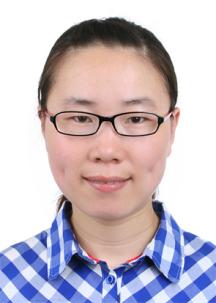
|
姓名:彭娟 民族:汉 学历:博士研究生 职称:副教授 邮箱:pengjuan@nxu.edu.cn;83083665@qq.com. 办公室电话: 研究方向:1)电催化剂材料及电催化过程的研究,包括CO2转化、电解水等关键技术;2)二维材料及非贵金属纳米材料的研发;3)纳米生物传感器。 |
个人简介:
彭娟,博士,宁夏大学化学化工学院教授,硕士生导师。2016年入选宁夏“百人计划”人才,2018年入选自治区科技创新领军人才。2023年入选全球前2%顶尖科学家榜单。主持完成3项国家自然科学基金项目及多项省部级项目。在研主持国家自然科学基金项目地区项目1项,重点项目子课题1项及多部省部级项目。以第一作者或通讯作者发表学术论文60余篇,单篇最高被引2000余次。相关文章发表在高质量期刊如Nano Letters, Small, Journal of Materials Chemistry A, Materials Today Nano, Materials Today advances, ACS Applied Materials and Interfaces等。授权发明专利2项,实用新型专利1项。1篇文章入选“中国最具国际影响百篇论文”。2016年获第六届中国侨界贡献创新人才奖。2018年获宁夏科技进步奖三等奖(排名2),指导研究生获得宁夏回族自治区优秀硕士学位论文;荣获宁夏优秀自然科学论文一等3项,二等奖2项,三等奖1项。指导本科生和研究生获自治区“互联网+”创新创业大赛银奖和铜奖,指导本科生创新创业项目国家级2项,区级3项。主编教材1部,参编教材1部。
研究领域:
1) 电催化材料及机理研究,包括CO2转化、电解制氢等关键技术;
2) 有机小分子的电化学合成;生物质电催化转化
3) 扫描电化学显微镜
4)纳米生物传感器。
工作经历:
2023.01至今 宁夏大学化,学化工学院,教授
2015.08-2022.12 宁夏大学,化学化工学院,副教授
2019.03-2020.03 新加坡南洋理工大学,材料工程学院,CSC访问学者,合作导师:颜清宇,刘政
2012.08-2015.07宁夏大学,化学化工学院,讲师
学习经历:
2010.09-2011.11 美国莱斯大学材料工程学院,联合培养博士生,导师:P.M. Ajayan
2008.09-2012.06南京大学化学化工学院,博士,导师:朱俊杰,姜立萍
2004.09-2007.07宁夏大学化学化工学院,硕士,导师:高作宁
2000.09-2004.07宁夏大学化学化工学院,学士
代表性学术论文(一作或通讯):
1. Recent progress in modular electrochemical synthesis of hydrogen and high value-added chemicals based on solid redox mediator. Small 2024, 2310573.
2. Electrochemical Conversion of CO2 into Formate Boosted by In Situ Reconstruction of Bi-MOF to Bi2O2CO3 Ultrathin Nanosheets. ACS Applied Materials & Interfaces 2024, 16 (11), 13882-13892
3. Self-Supporting Bi−Sb Bimetallic Nanoleaf for Electrochemical Synthesis of Formate by Highly Selective CO2 Reduction. ACS Appl. Mater. Interfaces 2023, 15, 6942−6950
4. Modular electrochemical production of hydrogen using Mott–Schottky Co9S8/Ni3S2 heterojunction as a redox mediator, International Journal of Hydrogen Energy, 2023,48, 16184-16197 .
5. A Mn single atom catalyst with Mn–N2O2 sites integrated into carbon nanosheets for efficient electrocatalytic CO2 reduction,Journal of Materials Chemistry A,2022, 10 (20), 10892-10901.
6. Bismuth-nickel bimetal nanosheets with a porous structure for efficient hydrogen production in neutral and alkaline media, Nanoscale 14 (2022) 17210-17221.
7. Recent advances in 2D transition metal compounds for electrocatalytic full water splitting in neutral media. Materials Today Advances 2020, 8, 100081.
8. Recent advances in the application of phosphates and borates as electrocatalysts for water oxidation. Materials Today Nano 2020: 100095.
9. Oxygen doped MoS2 quantum dots for efficient electrocatalytic hydrogen generation [J]. The journal of chemical physics. 2020. 152(13): 134704-134715.
10. Recent Progress on 2D Transition Metal Compounds-based Electrocatalysts for Efficient Nitrogen Reduction. Chemical Research in Chinese Universities 2020, 36 (4), 648-661.
11. Recent Progress on Bismuth-based Nanomaterials for Electrocatalytic Carbon Dioxide Reduction. Chemical Research in Chinese Universities 2020, 36 (3), 410-419.
12. Self-assembly of Au/MoS2 quantum dots core-satellite hybrid as efficient electrocatalyst for hydrogen production [J]. Tungsten, 2020, 2:194–202.
13. Ethylenediamine functionalized MoS2 quantum dots for terramycin sensing in environmental water and fish samples [J]. Microchem Journal. 2019, 152: 104406-104413.
14. Magnesium and nitrogen co-doped carbon dots as fluorescent probes for quenchometric determination of paraoxon using pralidoxime as a linker. Microchimica Acta, 2019, 186: 24.
15. Construction of an NAND logic gate based on molecularly imprinted dual-emission quantum dot composites for the detection of antibiotics. Anal.Methods, 2019, 11, 2033.
16. Hydrogen-bonding-induced colorimetric detection of melamine based on the peroxidase activity of gelatin-coated cerium oxide nanospheres. Anal. Methods, 2018, 10, 841
17. Cathodic electrochemiluminescence behaviour of MoS2 quantum dots and its biosensing of microRNA-21 Analyst,2018, 143, 3702
13. Green synthesis of fluorescent carbon dots for sensitive detection of Fe2+ and hydrogen peroxide. Journal of Nanoparticle Research. 2017, 19, 209.
14. Simultaneous determination of bisphenol A and hydroquinone using a poly(melamine) coated graphene doped carbon paste electrode, Microchimica Acta, 2016, 183, 2289~2296.
15. Magnetic colorimetric immunoassay for human interleukin-6 based on the oxidase activity of ceria sphere. Analytical Biochemistry, 2016, 492:63-68.
16. Biological application of luminescent graphene quantum Dots. Science of Advanced Materials, 2015, 7: 1945-1961.
17. Sensitive electrochemical detection of melamine based on gold nanoparticles deposited on a graphene doped carbon paste electrode. Anal. Methods, 2016, 8, 2526.
18. Copper sulfide nanoparticle-decorated graphene as a catalytic amplification platform for electrochemical detection of alkaline phosphatase activity. Analytica Chimica Acta, 2015, 878:87-94.
19. Electrochemical immunoassay for the prostate specific antigen using ceria mesoporous nanospheres. Microchim Acta, 2014, 181:1505–1512.
20. Fabrication of graphene quantum dots and hexagonal boron nitride nanocomposites for fluorescent cell imaging. Journal of Biomedical Nanotechnology, 2013, 9 (10): 1679-1685.
21. Graphene quantum dots derived from carbon fibers. Nano Letters, 2012, 12: 844-849.
22. Synthesis of silver nanoparticle–hollow titanium phosphate sphere hybrid as a label for ultrasensitive electrochemical detection of human interleukin-6. Small, 2011, 7: 2921–2928.